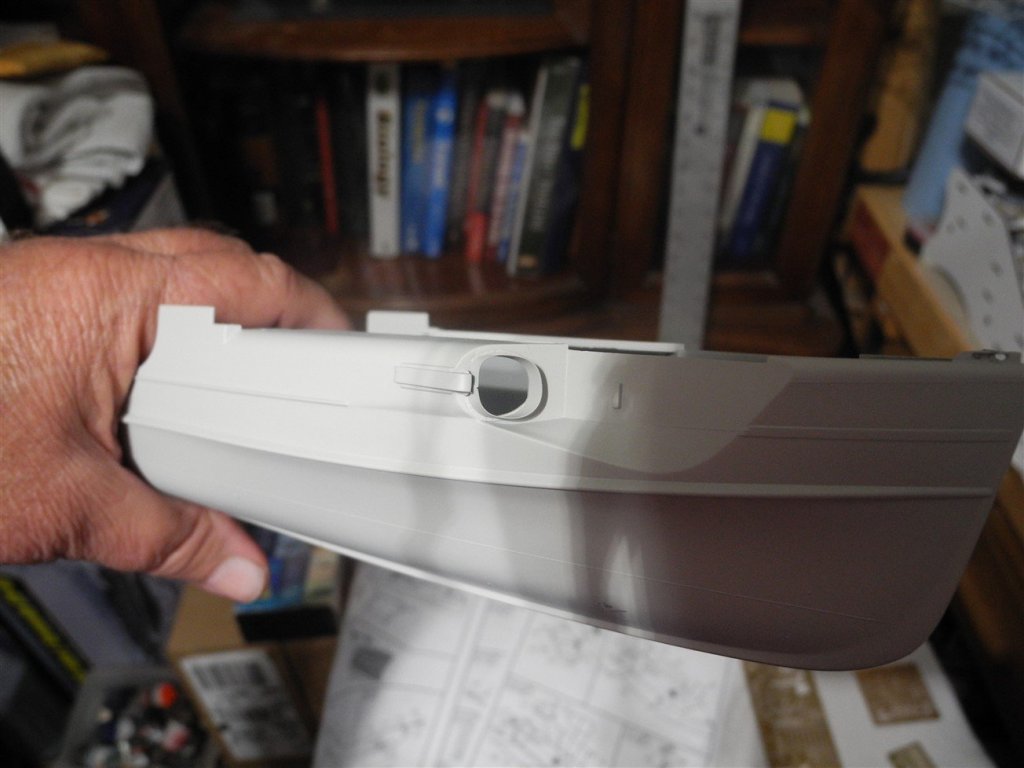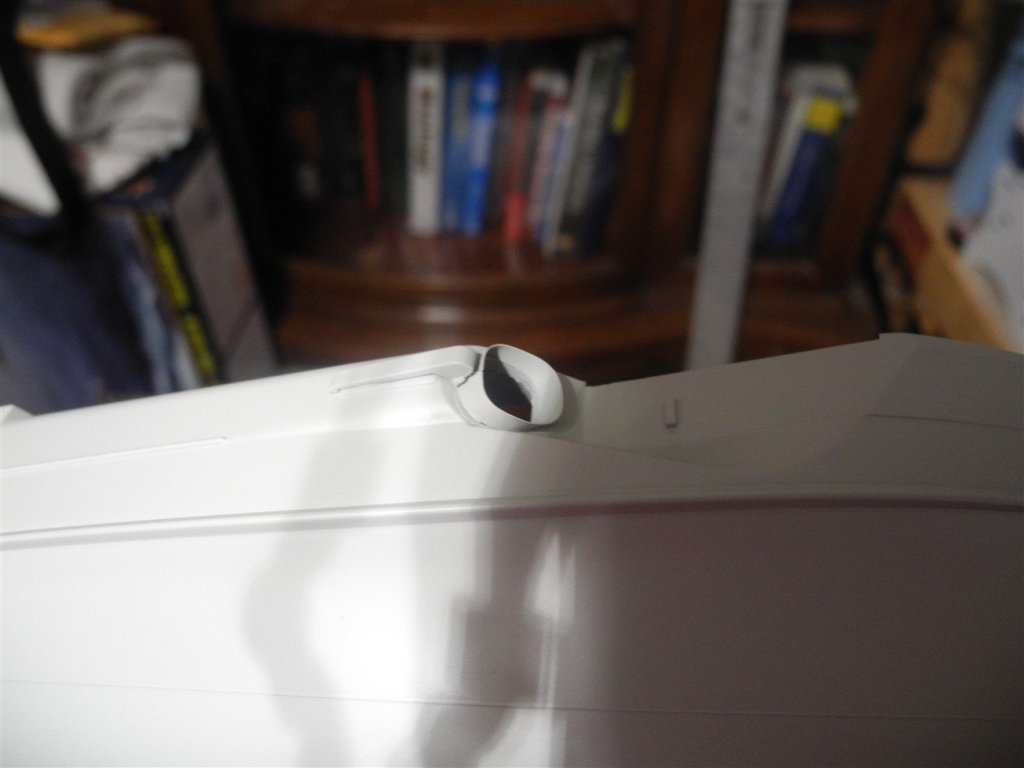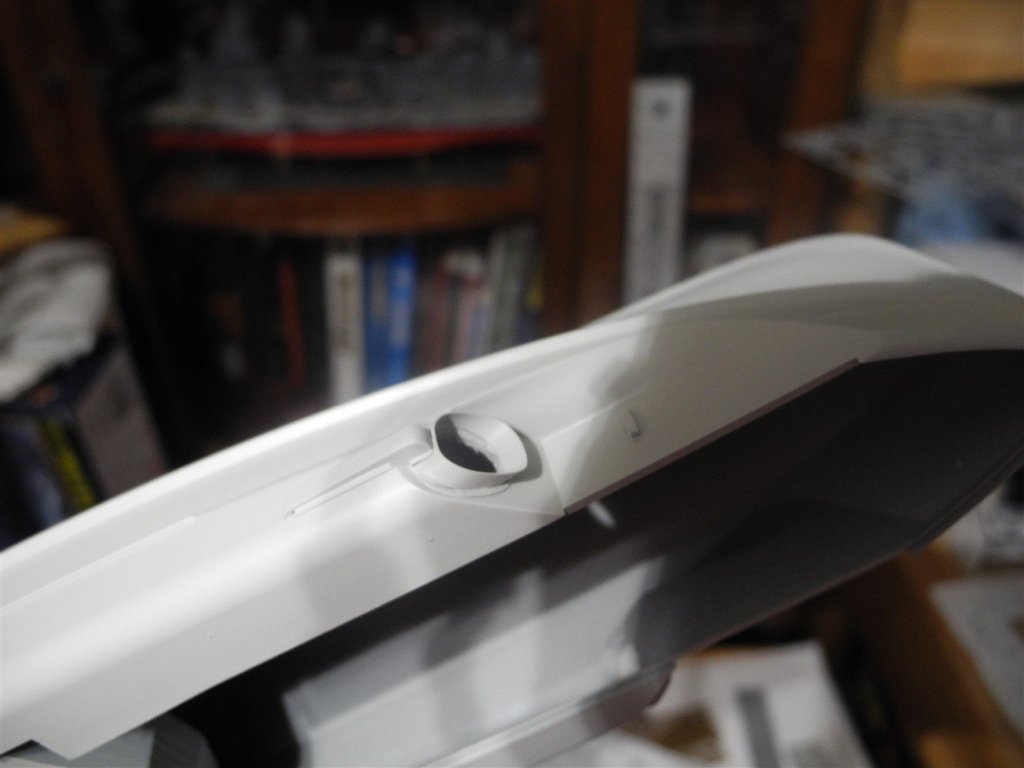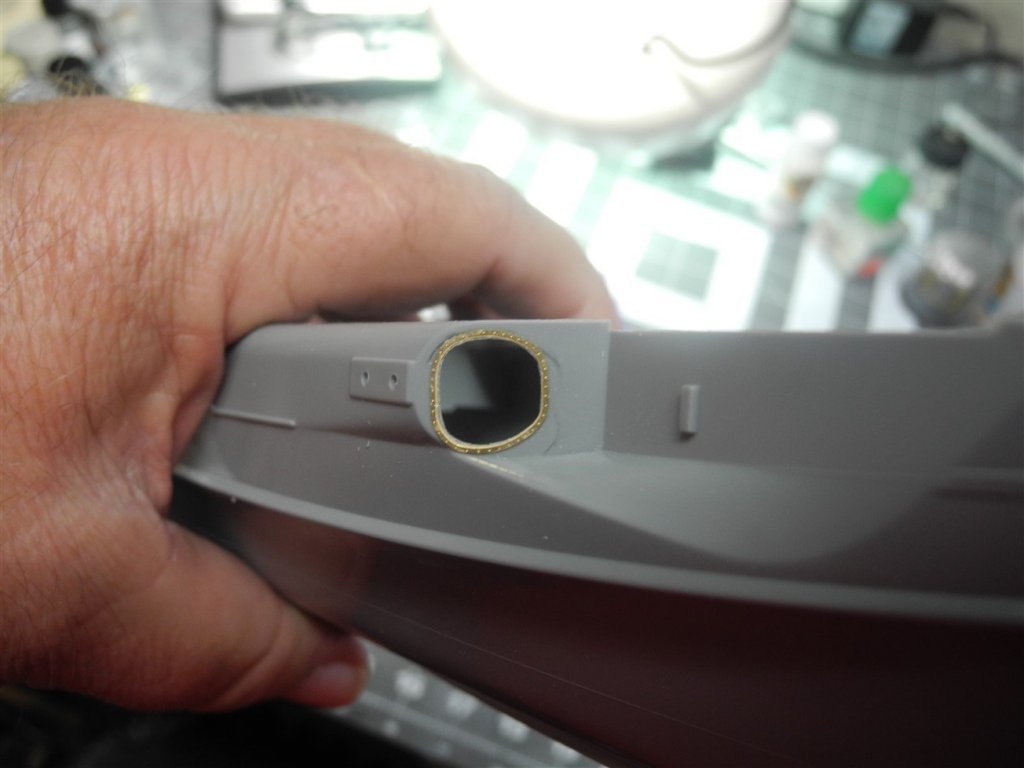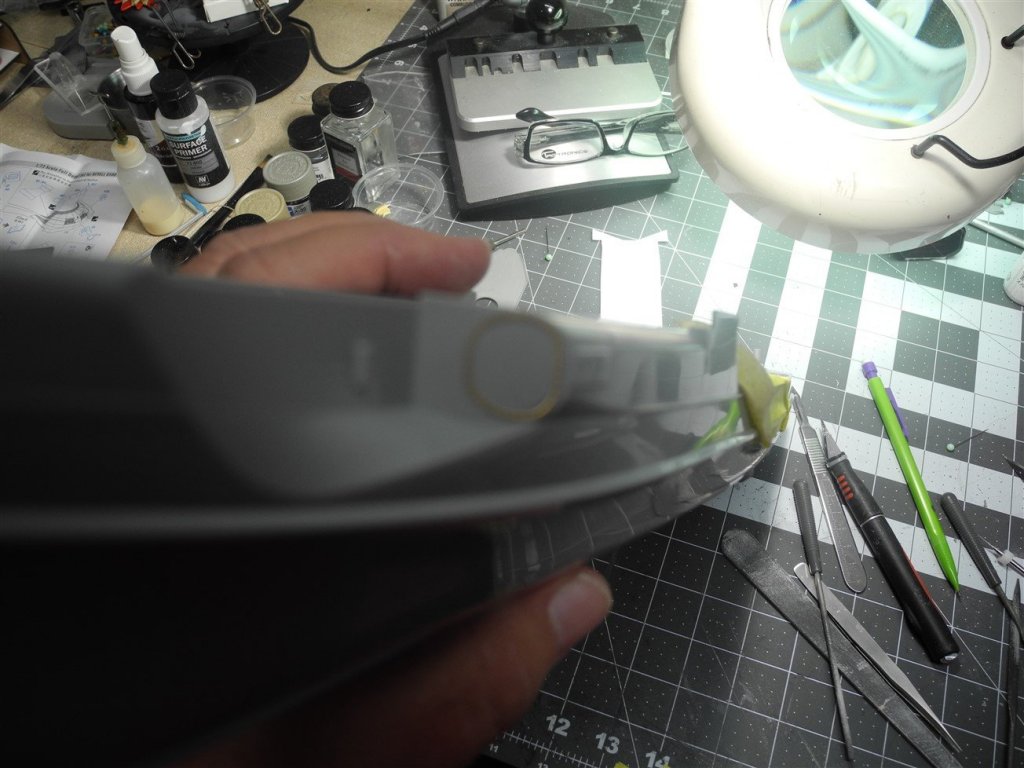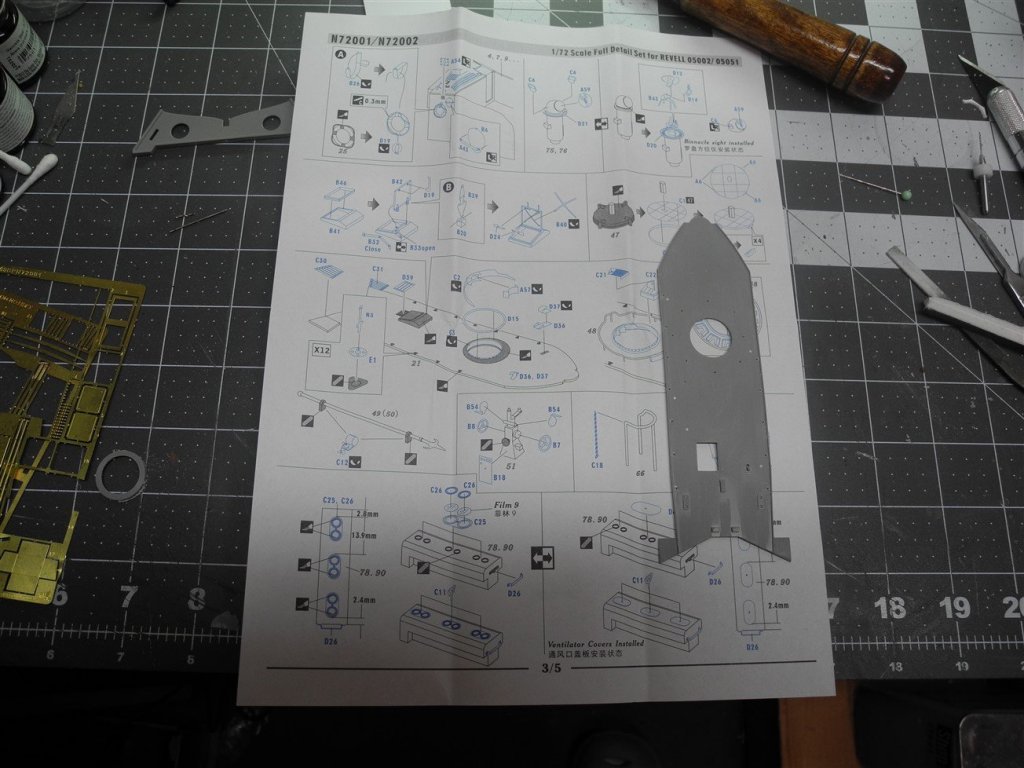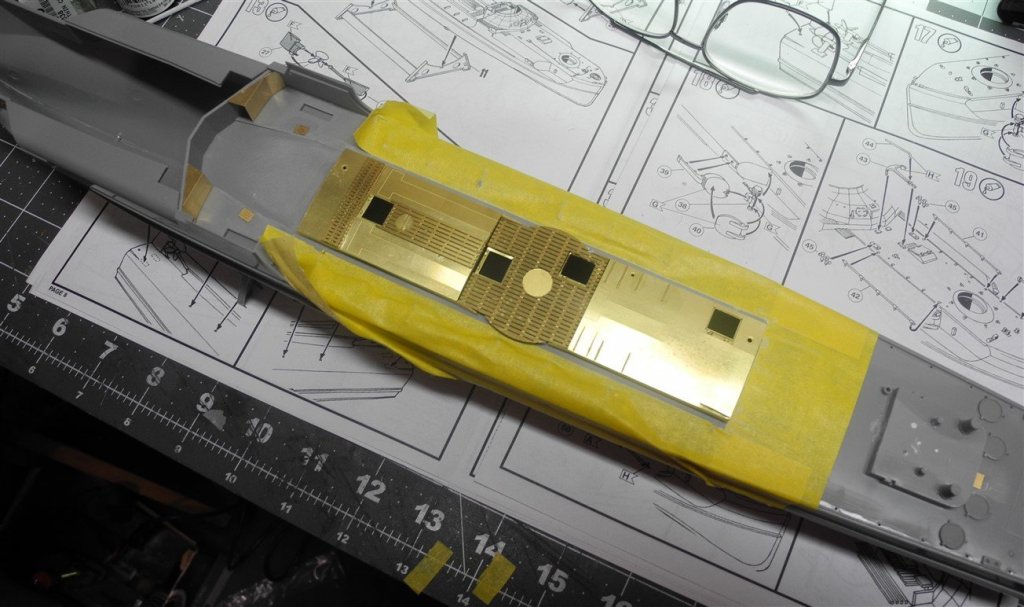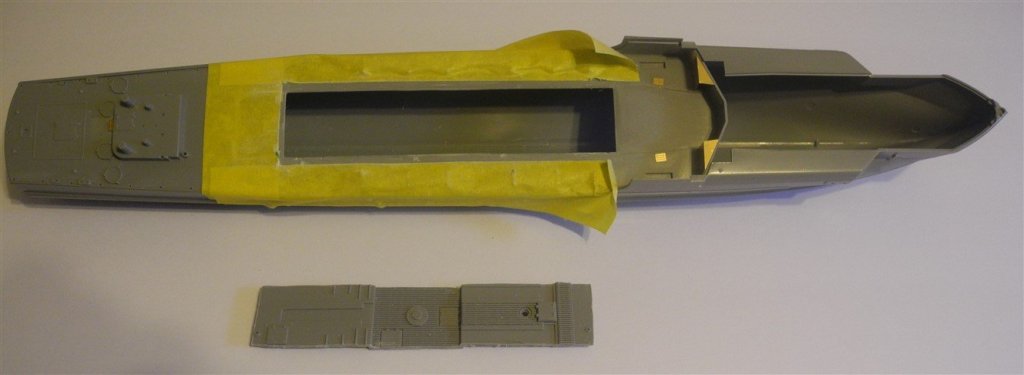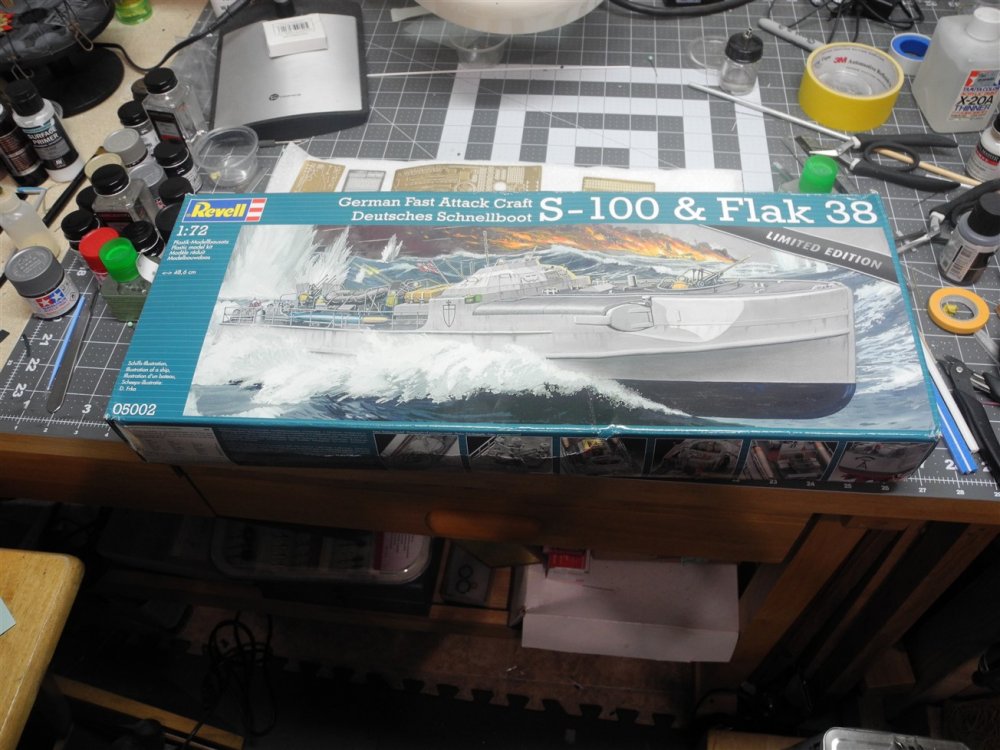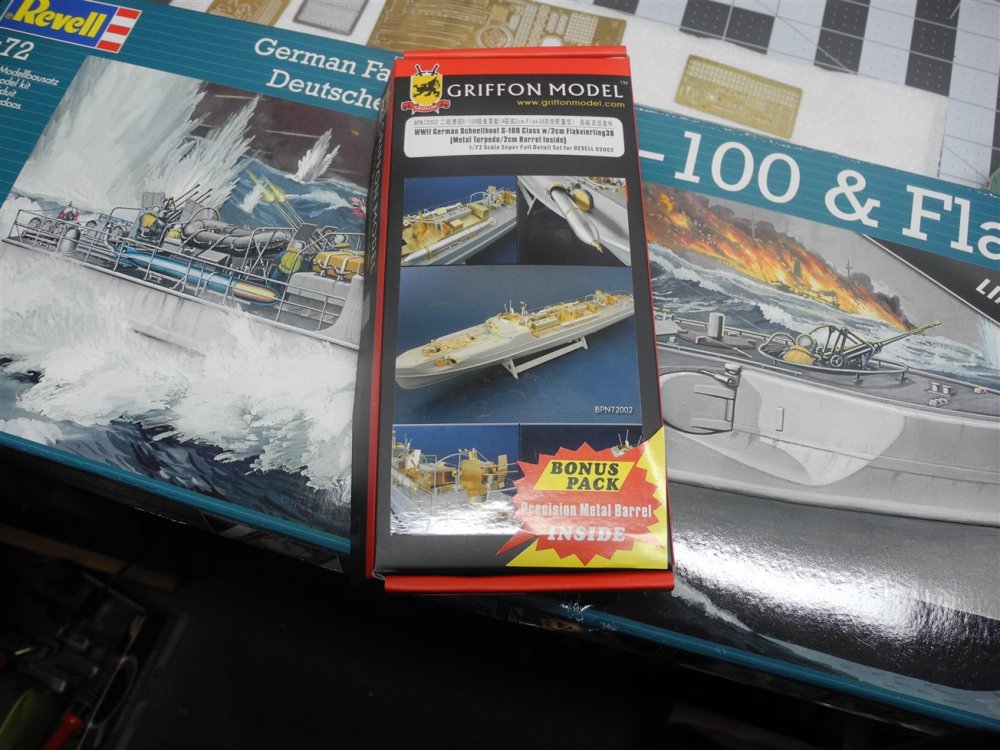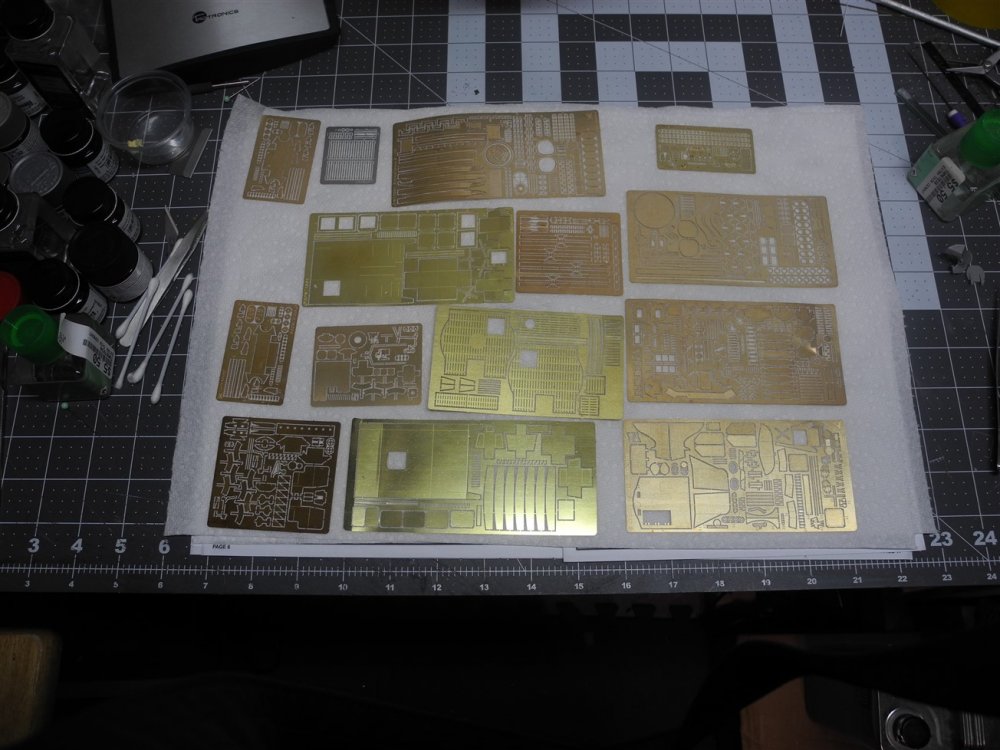-
Posts
7,746 -
Joined
-
Last visited
Content Type
Profiles
Forums
Gallery
Events
Everything posted by CDW
-
She's a Mona Lisa. We've been blessed to be witnesses to the building of a modeling masterpiece.
- 2,625 replies
-
- kaiser wilhelm der grosse
- passenger steamer
-
(and 1 more)
Tagged with:
-
After the torpedo tube holes are cut out, I then use some photo etch flat stock, anneal it, then shape it to the outline of the torpedo tube opening and glue it in place. In these pictures, the photo etch is in place and I've shot some primer on the hull.
- 44 replies
-
- schnellboot s-100
- revell
-
(and 2 more)
Tagged with:
-
The torpedo tubes at the bow of the boat get a little work over to correct some of the kit deficiencies. Again, this requires some surgery. There are some photo etch outlines that go to the front of the tubes. I first glue those PE pieces in place with acrylic glue, then use the inside outline as a pattern to drill small holes all the way around allowing me to cut out a proper opening in the plastic.
- 44 replies
-
- schnellboot s-100
- revell
-
(and 2 more)
Tagged with:
-
She looks very very long in that picture. Big model, for sure. The paint looks great, Greg.
-
Thanks, and of course you may come along, OC! Glad to have you aboard.
- 44 replies
-
- schnellboot s-100
- revell
-
(and 2 more)
Tagged with:
-
Here, almost all the surface detail on the forward deck has been surgically removed to prepare for the updated parts. Just to the left of the deck piece, on the instruction sheet, you can see the raised details that had to be removed and what will be added in its place.
- 44 replies
-
- schnellboot s-100
- revell
-
(and 2 more)
Tagged with:
-

Langoustier by mhmtyrl - FINISHED - 1:35
CDW replied to mhmtyrl's topic in - Build logs for subjects built 1851 - 1900
Outstanding. I love your work on the planking.- 27 replies
-
- langoustier
- lobster boat
-
(and 1 more)
Tagged with:
-
Hey Mike Great start, buddy. In the "good old days", we called those parts "die crunched". Sterling models were world famous for die crunched parts. Do you ever sand the side of the die cut sheet that's not completely cut through? Sometimes, sanding to reduce a small amount of thickness is enough to make the parts fall right out. At the least, it gives a lot less to cut when you're doing the knife work.
- 146 replies
-
- dumas
- Chris-Craft Commander Express
-
(and 2 more)
Tagged with:
-
Just dry fitting some of the photo etch superstructure I've been building. So far, so good. Fit seems okay. Still, lots to be done including more surgery to other deck parts.
- 44 replies
-
- schnellboot s-100
- revell
-
(and 2 more)
Tagged with:
-
A big difference in the hull, now compared to when you started. Great job! PS: How does the photo etch that came with you kit look? Does it appear sufficient to get a good finished result or would more be better? The reason I asked is because I've been seeing some 1:250 Yamato photo etch sets on Ebay recently and am wondering if I should get a set. I don't think my kit part installments have included the kit photo etch yet for me to compare.
-
There's quite a bit of surgery that needs to be done to build the detail set and incorporate it to the model. Here the entire center of the deck is removed to prepare it for a new, photo etch superstructure.
- 44 replies
-
- schnellboot s-100
- revell
-
(and 2 more)
Tagged with:
-

Airbrush
CDW replied to Mike Dowling's topic in Painting, finishing and weathering products and techniques
edit: I was up too late and and had a senior moment stating lanolin. I actually use glycerin. -

Airbrush
CDW replied to Mike Dowling's topic in Painting, finishing and weathering products and techniques
For the airbrush cleaning fluid "recipe" above, I forgot to add that I give it a squirt of lanolin glycerin as well. The lanolin glycerin acts as a lubricant. If your local drug store is like mine, a chain store, you'll probably have to search for a small mom and pop drug store for the lanolin. Big drug store chains don't carry items like that anymore. I guess there's not much call for it. edit: I was up too late and and had a senior moment stating lanolin. I actually use glycerin. -

Airbrush
CDW replied to Mike Dowling's topic in Painting, finishing and weathering products and techniques
I mix up a gallon of distilled water, cheap windshield washer fluid, alcohol, and a dash of dish washing detergent, then dispense small portions in a small squirt bottle to everyday use. Been using this concoction for years to clean my airbrushes. It's cheap and very effective for acrylics cleanup. My mix ratio is approx: 2 3/4 quarts : 1 quart : 10 oz : 1 tablespoon -
Good news...my Griffon Models detail set came with a BEAUTIFUL set of turned aluminum torpedoes, complete with detailed little bitty props and all that good stuff.
- 44 replies
-
- schnellboot s-100
- revell
-
(and 2 more)
Tagged with:
-
Like you, I am also having some trouble figuring this out. Maybe there are features that have not yet been loaded into the new program (I hope) because the new format is not quite as user friendly as far as posting pictures is concerned. Have you found a way to post pictures from Imgur or other such sources? I could not find the way to do that.
-
Yes, I have to admire that tripod work as well. Been there and done that, and know how difficult it is to get it all lined up. Your entire work so far is coming along beautifully.
-
If it were the 1:35 Italeri Schnellboot, it would be a more suitable model for RC. But the 1:72 version I'm building is a little small.
- 44 replies
-
- schnellboot s-100
- revell
-
(and 2 more)
Tagged with:
-
Thanks Captain Slog. Glad to have you aboard. I'm looking forward to your 1:200 Mikasa build when you get to it.
- 44 replies
-
- schnellboot s-100
- revell
-
(and 2 more)
Tagged with:
-
My next project. I should have bought this model a few years ago when they were plentiful because now, they are hard to find. I shopped around until I found one on Ebay from Russia. This particular set included the Griffon Model comprehensive detail set. I cleaned up the photo etch sheets in my sonic cleaner and am ready to begin assembling the boat.
- 44 replies
-
- schnellboot s-100
- revell
-
(and 2 more)
Tagged with:
-

Airbrush
CDW replied to Mike Dowling's topic in Painting, finishing and weathering products and techniques
For light cleaning between colors, I just flush mine with airbrush cleaning fluid meant for acrylics. Flush it by filling your cup with cleaning fluid and spray it through the airbrush until it comes through clear. For heavy cleaning, you'll have to disassemble the airbrush and clean it using the same cleaning fluid. It helps a lot if you have a set of cleaning brushes meant for cleaning airbrush.
About us
Modelshipworld - Advancing Ship Modeling through Research
SSL Secured
Your security is important for us so this Website is SSL-Secured
NRG Mailing Address
Nautical Research Guild
237 South Lincoln Street
Westmont IL, 60559-1917
Model Ship World ® and the MSW logo are Registered Trademarks, and belong to the Nautical Research Guild (United States Patent and Trademark Office: No. 6,929,264 & No. 6,929,274, registered Dec. 20, 2022)
Helpful Links
About the NRG
If you enjoy building ship models that are historically accurate as well as beautiful, then The Nautical Research Guild (NRG) is just right for you.
The Guild is a non-profit educational organization whose mission is to “Advance Ship Modeling Through Research”. We provide support to our members in their efforts to raise the quality of their model ships.
The Nautical Research Guild has published our world-renowned quarterly magazine, The Nautical Research Journal, since 1955. The pages of the Journal are full of articles by accomplished ship modelers who show you how they create those exquisite details on their models, and by maritime historians who show you the correct details to build. The Journal is available in both print and digital editions. Go to the NRG web site (www.thenrg.org) to download a complimentary digital copy of the Journal. The NRG also publishes plan sets, books and compilations of back issues of the Journal and the former Ships in Scale and Model Ship Builder magazines.

.jpg.7e80607770d9078b2f0b470e8c9c33ac.jpg)

